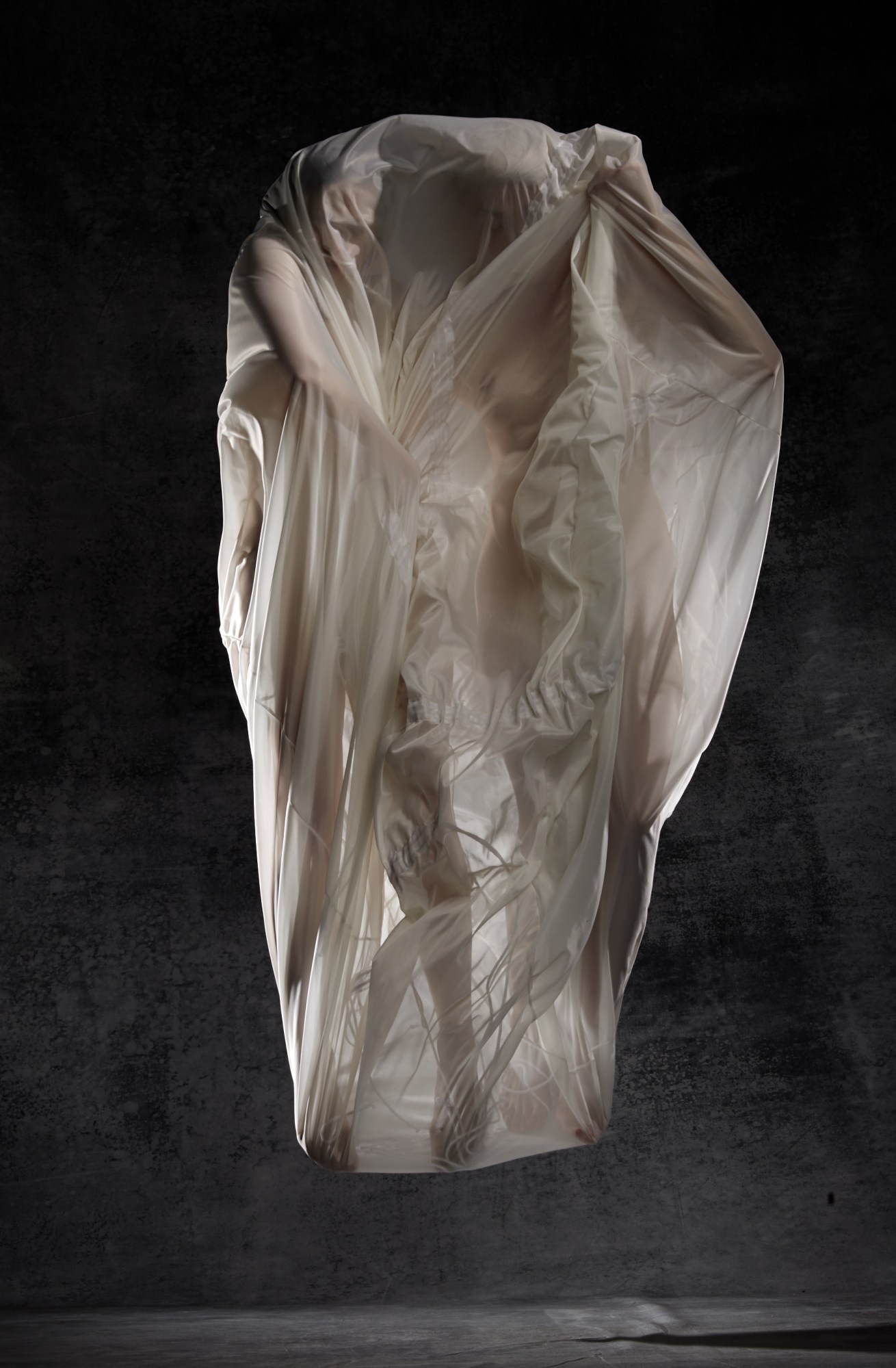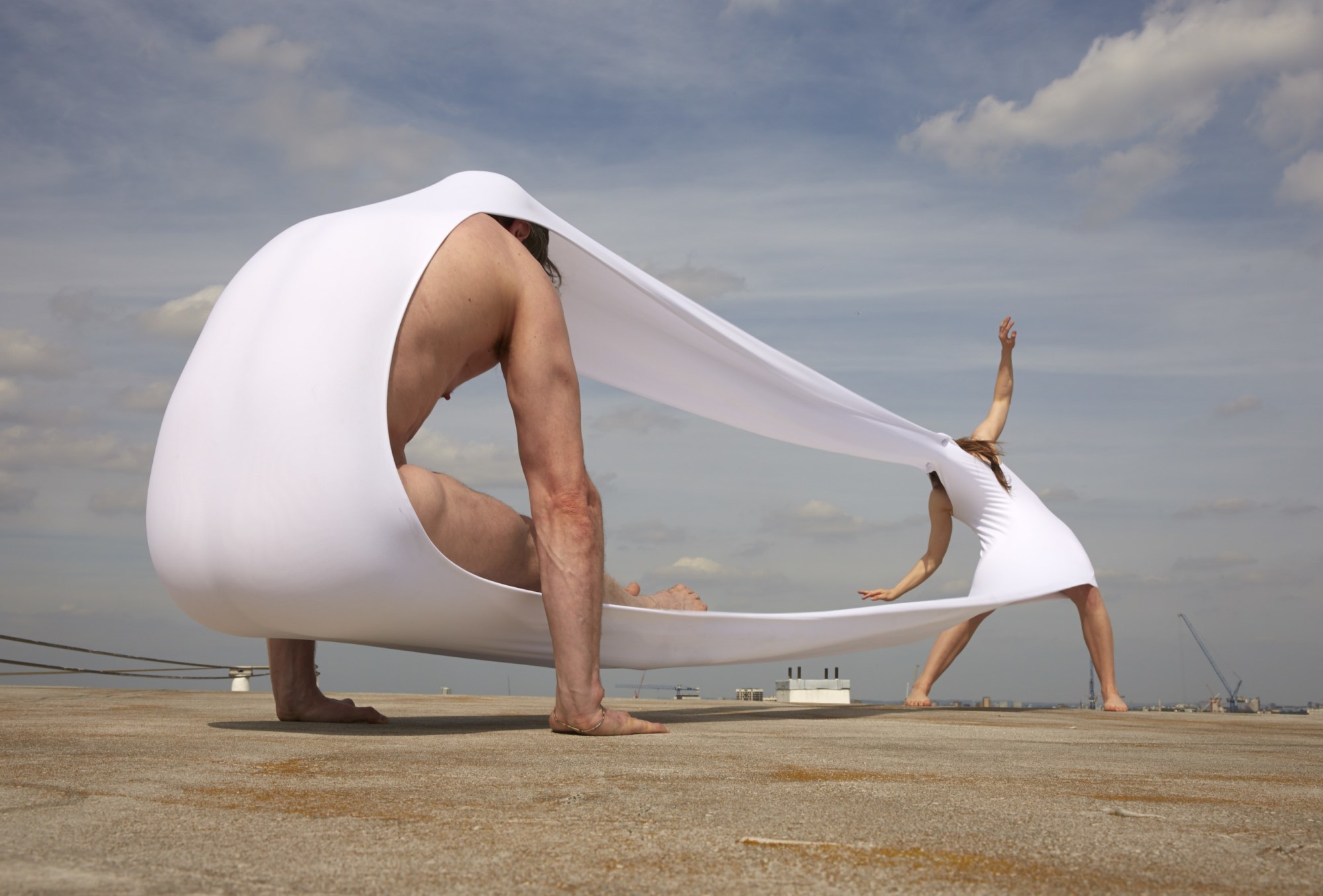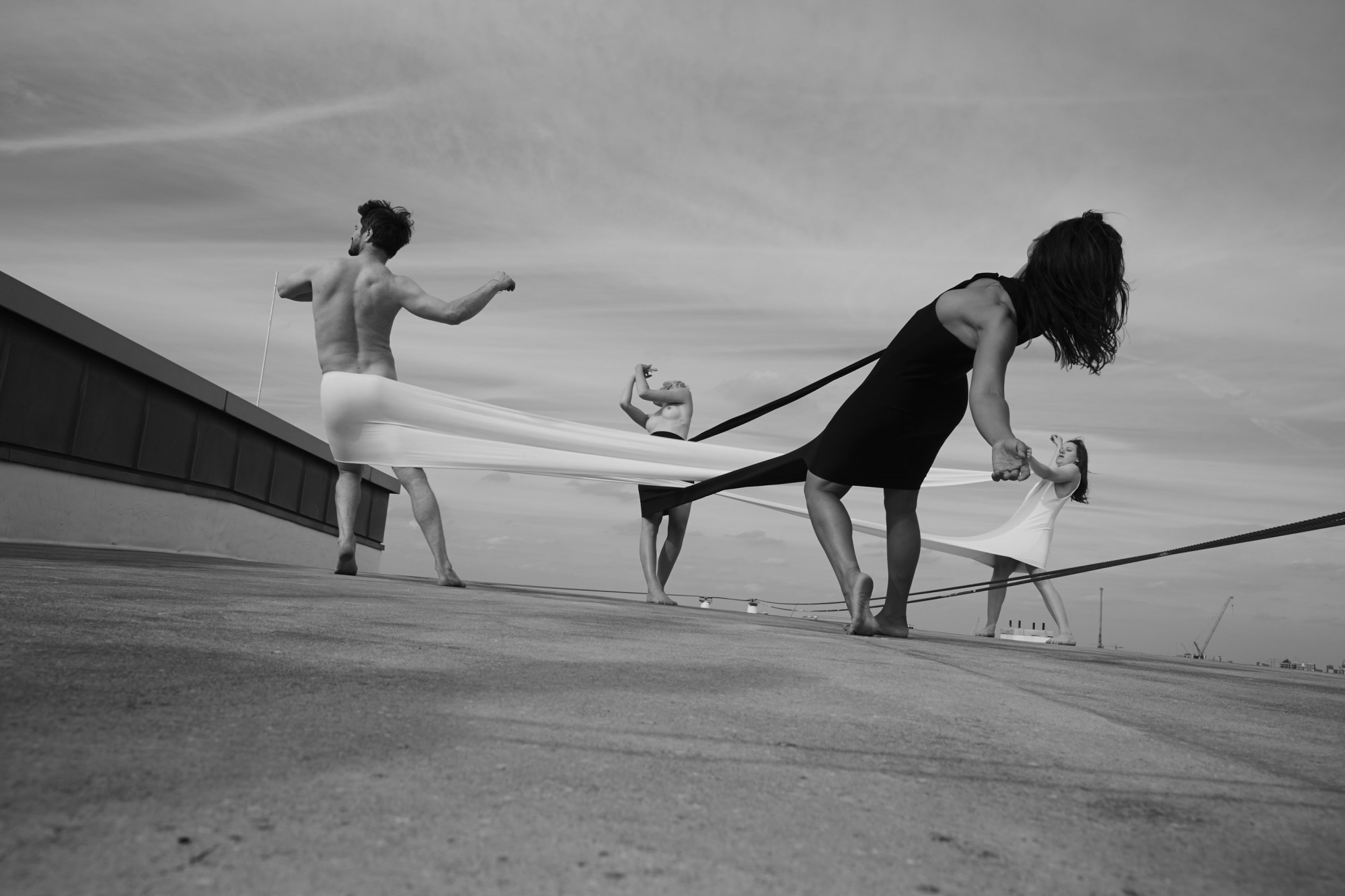Over the last decade, Chalayan has defined what fashion means to be conceptual and avant-garde. Whether it’s his skirt-into-a-table (autumn/winter 00), varyingly-covered women in burkas (spring/summer 98), or his Venice Biennale project with Tilda Swinton, Chalayan has consistently proved to be a provocateur of contemporary culture. His latest boundary-pushing body of work comes in the form of a choreographed piece called Gravity Fatigue, which opens today at London’s Sadler’s Wells.
“It’s not going to be like a dance show”, Chalayan smiles wryly. “It’s trying to propose new ways of looking at something. It’s abstraction based on observation. I’m an observer in many ways, I explore new ideas and propose new ways of looking.” Chalayan has always applied his genius in a way that goes beyond just what we see on the runway, so when the Chief Executive of Sadler’s Wells Theatre, Alistair Spalding asked him to create a dance piece, he took it in his stride. “For me, fashion is sometimes limited in what you can say with it,” he explains, “whereas if you put it in a context of dance maybe you can express yourself more fully.”

Full expression, for want of a better term, is a constant goal of Chalayan’s; his projects never stand in solitude and seeing one of his creations calls upon a multitude of senses. This is surely one of the reasons why in 2000, Time Magazine included him in their list of the 100 most influential innovators of the 21st century – he was the only fashion designer on that list. “I don’t see how you can be a creative person if you can’t think outside the box and see how things are connected,” he says of constantly pushing and merging creative mediums. “I think it’s up to the creative person to make those connections with things that other people can’t necessarily see.”
So Gravity Fatigue is dance but not just dance; it’s movement seeking to intrigue and challenge. “There is a very interesting correlation between clothes and movement, and I think the clothes are the grammar for the movement. There’s a relational situation, it never stops with one thing. People ask, ‘how are you inspired all the time?’ But it’s actually just that doing something leads to another idea. By doing, you’re inspired. I do feel that my work has always been about challenging social and sexual preconceptions, broadly speaking. Not every project I do is about that though. I react to events in the world. I react to relationships, to body language. I think when you do it for the sake of it, you can become radicalised, and I am not that sort of person.”

On paper Chalayan may appear to be a solely conceptual thinker, but the emotion in his performance comes across immediately. “I like being emotional,” he admits. “I feel that there are feelings and certain realities that exist beyond you, and you are able to catch them. There is a sort of attunement involved that you can call partly emotional, partly spiritual, and then it becomes rationalised. People think that being emotional is a weakness but I see it as a strength, especially in Western culture, where we’re told we need to be rational with everything.” That’s the quiet yet resonating power of Chalayan – the simultaneous emotional accessibility and observational detachment.
How does Chalayan feel his work – that is always born for interpretation – fits into today’s digitised, throwaway world; a place based on followers, likes, shares and retweets? “Each generation is a few notches more advanced than their parents, we are living in a very culturally rich environment. I do feel like a misfit in this current climate. It’s interesting, but on the other hand I feel we’re losing something. We’re saturated with information, I call it ‘appreciation fatigue’ because I think we are so overwhelmed by stuff. It’s living in this LIKE culture. Don’t get me wrong, you’re communicating with people who you might not have communicated with before, but it’s got to such an extreme that it’s created a lethargy and an apathy. You don’t have any chance to miss anything. That becomes a modern anxiety. I think it limits your appreciation of things.”
His advice to future creatives is to work hard, communicate, and be curious. Before we finish up, Chalayan smiles and adds to his brave new world: “I think it’s very important too, to remember that we are these minuscule things in a huge universe and that anything can happen.”

Gravity Fatigueis open from today until 31st October.
Credits
Text Bojana Kozrevic
